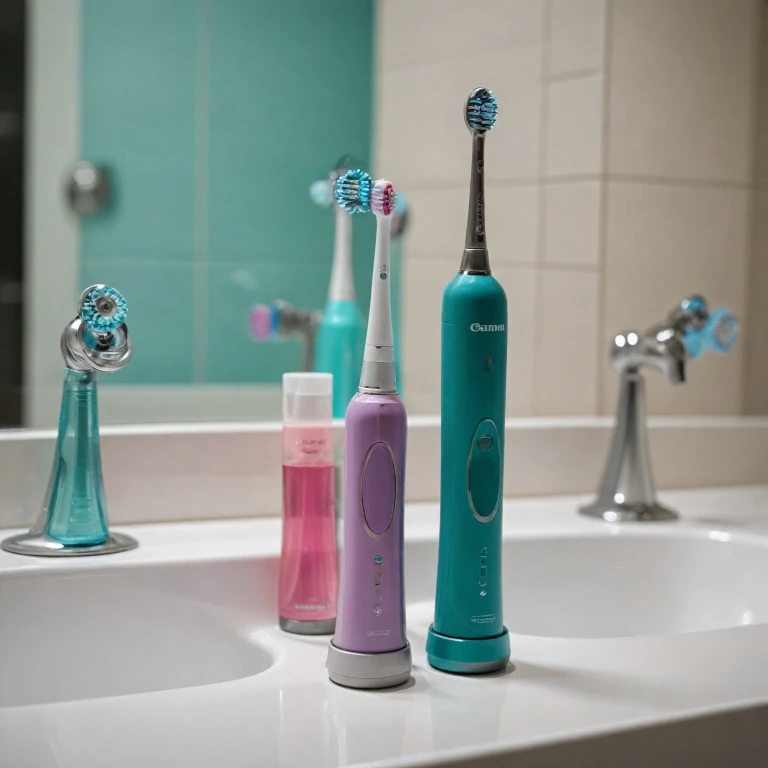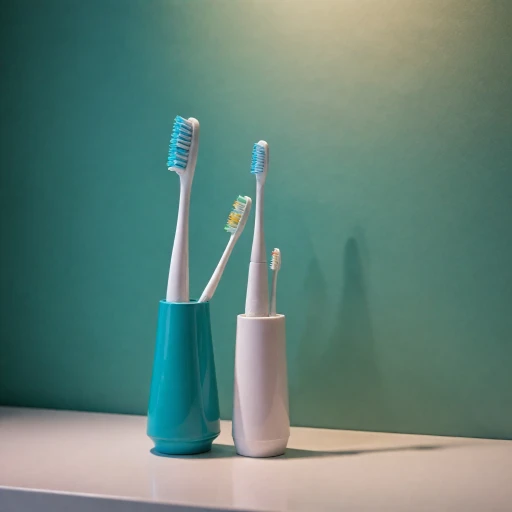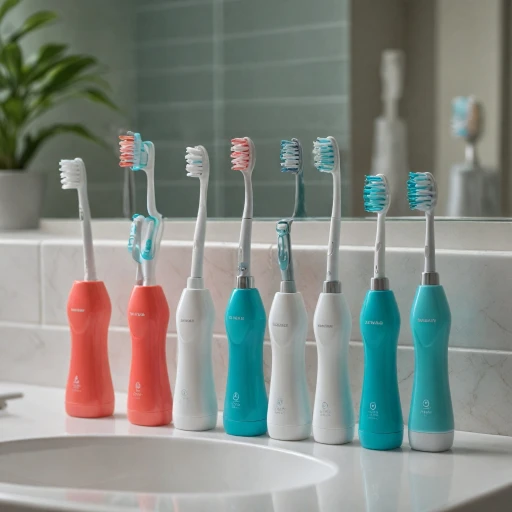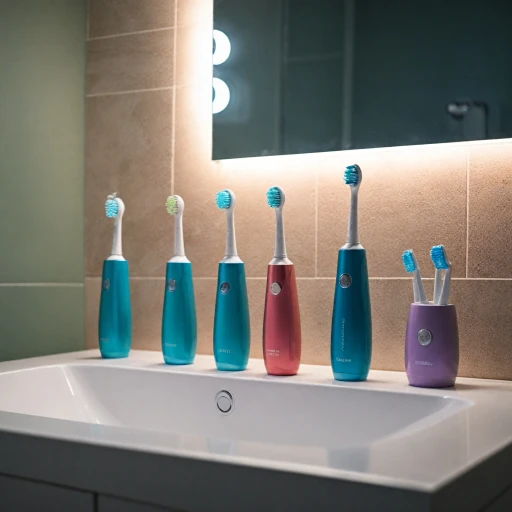Understanding the Needs of Braces Wearers
Identifying Oral Care Essentials for Orthodontic Wearers
Wearing braces introduces a unique oral care routine that necessitates specialized attention. Individuals with braces need toothbrushes equipped to effectively maneuver around brackets and wires. This ensures comprehensive cleaning, crucial in maintaining optimal oral hygiene. When selecting an electric toothbrush for braces, it's important to consider specific needs:- Brush Head Size and Shape: Small and shaped orthodontic heads are vital to navigating tight spaces and accessing difficult-to-reach areas around the brackets and wires. Such intricacy helps prevent plaque accumulation and maintain cleanliness.
- Soft Bristles: Opt for soft bristles to avoid damage to the brackets and irritation to gums. Soft bristle brushes gently yet effectively clean teeth surfaces and gum lines, providing a comfortable yet thorough cleaning experience.
- Interdental and Orthodontic Brushes: Incorporate these into your routine to enhance the removal of food debris and plaque from areas that require special attention. Interdental brushes are particularly useful for cleaning the spaces between teeth and braces.
- Replacement Heads Availability: Regularly replacing the toothbrush head is critical to maintaining peak performance and hygiene. Look for brushes with easily obtainable replacement heads that ensure continued effective cleaning.
Features to Look for in an Electric Toothbrush
Key Features for Optimal Oral Care with Braces
When selecting an electric toothbrush for orthodontic braces, it's crucial to focus on features that enhance your oral hygiene routine. Here are some essential aspects to consider:
- Soft Bristles: Opt for a toothbrush with soft bristles to gently clean around brackets and wires without causing damage or discomfort. Soft bristles are effective in removing plaque while being gentle on gums.
- Small Brush Head: A small toothbrush head is ideal for navigating the tight spaces around braces. It allows for precise cleaning of each tooth and better access to difficult areas.
- Interdental Brush Compatibility: Consider toothbrushes that are compatible with interdental brushes or have features that mimic their cleaning capabilities. These can help clean between teeth and around braces more effectively.
- Multiple Cleaning Modes: Electric toothbrushes with various cleaning modes can cater to different needs, such as sensitive teeth or deep cleaning. This versatility can be beneficial for maintaining optimal oral hygiene with braces.
- Replacement Heads Availability: Ensure that replacement heads are readily available and affordable. Regularly changing the brush head is essential for maintaining effective cleaning performance.
- Battery Life and Charging: Consider the battery life and charging options of the toothbrush. A long-lasting battery and convenient charging options can make daily use more manageable.
These features will help you maintain excellent oral hygiene while wearing braces, ensuring that your teeth and gums remain healthy throughout your orthodontic treatment. For more insights on proper brushing techniques and common mistakes to avoid, explore the other sections of this guide.
Top Electric Toothbrush Models for Braces
Suggested Electric Toothbrush Models for Orthodontic Care
When dealing with orthodontic braces, selecting an electric toothbrush specifically suited for this purpose is crucial. Here's a curated list of top-performing models designed with features to effectively maintain oral hygiene for braces wearers.- Oral-B Genius X: Known for its advanced AI technology, this toothbrush is tailored to guide you in brushing thoroughly around brackets and wires. The round brush heads ensure precise cleaning, while soft bristles are gentle on both teeth and gums. Its price is justified by the quality and effectiveness in maintaining oral health while wearing braces.
- Philips Sonicare ProtectiveClean 6100: This model enhances your cleaning performance with customizable intensity settings. The sonic technology offers a gentle yet effective cleaning, perfect for sensitive gums, and uses safety mechanisms to ensure optimal pressure on teeth surfaces and around braces. The brush's small head is ideal for accessing difficult areas.
- Waterpik Sonic Fusion: An innovative product combining brushing and water flossing techniques, making it an excellent choice for orthodontic care. This dual function aids in cleaning interdental spaces and beneath gumlines effectively, often recommended for those with complex dental care needs.
- TePe Implant Orthodontic Brush: Developed specifically for users with orthodontic appliances, this brush optimizes oral hygiene by featuring an orthodontic-specific head design. It’s geared for thorough cleaning around brackets and wires, with gentle yet effective soft bristles.
Proper Brushing Techniques with Braces
Effective Brushing Techniques for Achieving Clean Teeth with Braces
Navigating oral hygiene can be quite the challenge when wearing orthodontic braces due to the intricate design of brackets and wires. Knowing how to properly brush your teeth is vital to keep your dental health in check and to safeguard your braces from any potential damage. Here are some time-tested techniques for brushing your teeth effectively when wearing braces:- Choose the Right Angle: Position your toothbrush at a 45-degree angle towards the gum line and gently move it in small circles. This helps clean the area below the brackets, where plaque often accumulates.
- Focus on One Tooth at a Time: Give each tooth the attention it deserves. Spend a couple of seconds brushing around each bracket and tooth to ensure a comprehensive clean.
- Use Interdental Brushes: Interdental brushes can be a game-changer for those with braces. Their small, specialized design allows them to reach spaces a regular toothbrush might miss, assisting in effective plaque removal.
- Gentle Pressure with Soft Bristles: Always use a toothbrush with soft bristles to avoid damaging sensitive gums and enamel. Apply gentle pressure when brushing to maintain effective oral hygiene.
- Don’t Forget to Brush Your Braces: Angling the toothbrush to clean around the brackets and wires will help remove food particles and prevent plaque buildup.
- Dedicate Time for Each Quadrant: Divide your mouth into sections and spend at least 30 seconds on each to guarantee a thorough clean. A timer might be helpful to ensure you’re not rushing through the process.
Common Mistakes to Avoid
Missteps to Avoid for Optimal Braces Cleaning
Braces wearers are often vigilant about their oral hygiene, but certain common errors can disrupt their efforts. Addressing these mistakes is crucial in ensuring both the effectiveness of your cleaning routine and the longevity of your orthodontic enhancements. Over-Aggressive Brushing While maintaining oral hygiene is vital, using excessive force with your electric toothbrush can damage both your soft bristles and your gums. Opt instead for a gentle, controlled motion to avoid irritating your gums and exaggerating wear on your toothbrush head. Incorrect Brush Head Size Selecting a head that is too large for your mouth can limit access to hard-to-reach areas around brackets and wires. Consider using a small, orthodontic toothbrush head specially designed for cleaning dental brackets and ensuring thorough plaque removal. Neglecting Interdental Cleaning Braces can create tiny spaces that even the best toothbrush might miss. Incorporate interdental brushes into your routine to clean between brackets effectively, targeting areas where toothbrushes might fall short. Irregular Replacement of Brush Heads Replacements are key to maintaining your toothbrush's efficiency. Every three months is a good rule of thumb, but those with braces may need to swap heads more frequently if bristles become frayed or impaired. Ignoring the Importance of Consistency Consistency is the cornerstone of great oral care. Whether it's following the proper brushing techniques daily or remembering to clean your braces toothbrush after each use, establishing routine habits is essential. Staying informed and attentive to these missteps will greatly contribute to effective brushing and the health of both your teeth and orthodontic appliances.Maintaining Your Electric Toothbrush
Ensuring the Longevity of Your Electric Toothbrush While Using Braces
Maintaining your electric toothbrush is essential not only for oral hygiene but also to extend the longevity of your product, especially when accommodating the unique needs of orthodontic braces. Here's a simple guide to keep your toothbrush in top condition:- Regular Cleaning of the Toothbrush Head: Ensure that you rinse the brush head thoroughly after every use, focusing particularly on removing any toothpaste residue that might accumulate around the small crevices. This step is crucial since toothpaste can build up more easily when navigating around brackets and wires.
- Interdental and Orthodontic Brushes for Extra Cleaning: In addition to using your main electric toothbrush, consider using interdental brushes or a braces-specific toothbrush for hard-to-reach areas. They are particularly effective at cleaning around brackets and in between teeth where food particles often get trapped.
- Replacement of the Toothbrush Head: Be mindful of how frequently you replace your brush head. For optimal cleaning and care, replace your toothbrush head every three months, or even sooner if you notice any fraying or softness in the bristles. Using a soft bristle head can help protect sensitive gums and avoid irritation.
- Battery and Charger Care: If your toothbrush is rechargeable, ensure that it’s fully charged regularly, but don’t overcharge, as this can wear down the battery life. For battery-operated versions, keep spare batteries on hand to avoid interruptions in your routine oral care.
- Storage Considerations: Store your toothbrush in an upright position to allow it to air dry, which helps prevent the growth of bacteria. A travel case can protect the toothbrush head from dust and contaminants, especially in shared bathrooms.




